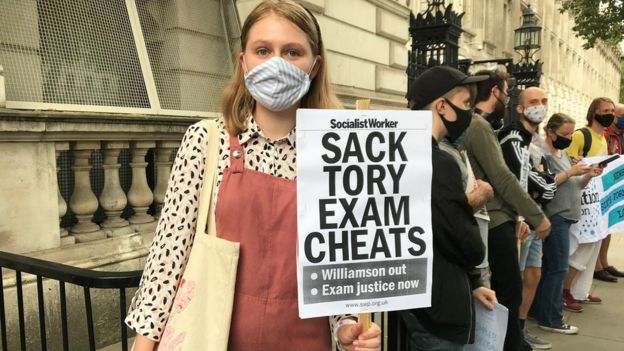

A close contact who does not live in a highest risk setting.Scenario A - Close contacts who DO NOT live in a highest risk setting I was exposed to someone who has symptoms or tested positive for COVID-19 If you do not meet the criteria above, follow the additional instructions in Scenario A or B, if applicable.

If you have symptoms, continue to isolate until your symptoms have been improving for 24 hours (or 48 hours if gastrointestinal symptoms such as vomiting or diarrhea) and you do not have a fever. For routine operations, you may return to work 10 days from the date your symptoms started or the date of your positive test, if available (whichever is earlier). Speak to your employer and follow your workplace guidance for returning to work.If you are working in a highest risk setting: Avoid non-essential visits to any highest risk settings.Not visit anyone who is immunocompromised or at higher risk of illness (i.e., seniors).People who are exempt from masking (e.g., children under two years of age (24 months), etc.) may return to public settings without wearing a mask.You can participate in activities where a mask is worn but you should avoid non-essential activities where removing the mask would be necessary (e.g., dining out, playing a wind instrument, high contact sports where masks cannot be safely worn).Exceptions would include removing the mask temporarily for essential activities like eating (e.g., when eating in shared space at school/work while maintaining as much distance from others as possible). Wear a mask as much as possible in public settings (including school and child care, unless under 2 years old (24 months)).Continue to wear a well-fitted mask in all public settings.For a total of 10 days after the start of symptoms (or date of positive test result, whichever is earlier), you should:.If you develop symptoms, self-isolate immediately. If you have a positive test result and no symptoms, you do not need to self-isolate unless symptoms develop, but you should follow the precautions below.Isolate until symptoms have been improving for 24 hours (or 48 hours if gastrointestinal symptoms such as vomiting or diarrhea) and you do not have a fever.Scenario C – Other individuals with COVID-19 symptoms or a positive test result Isolate for 20 days from the date your symptoms started or the date of your positive test, if available (whichever is earlier) AND until your symptoms have been improving for 24 hours (or 48 hours if gastrointestinal symptoms such as vomiting or diarrhea) and you do not have a fever.

Those who remain best secondary download#
Download our tested positive letter with instructions.Employees working in highest-risk settings should report their exposure and follow their workplace guidance on return to work.Isolate for 10 days from the date your symptoms started or the date of your positive test, if available (whichever is earlier) AND until your symptoms have been improving for 24 hours (or 48 hours if gastrointestinal symptoms such as vomiting or diarrhea) and you do not have a fever.

You should self-isolate and follow these instructions:


 0 kommentar(er)
0 kommentar(er)
